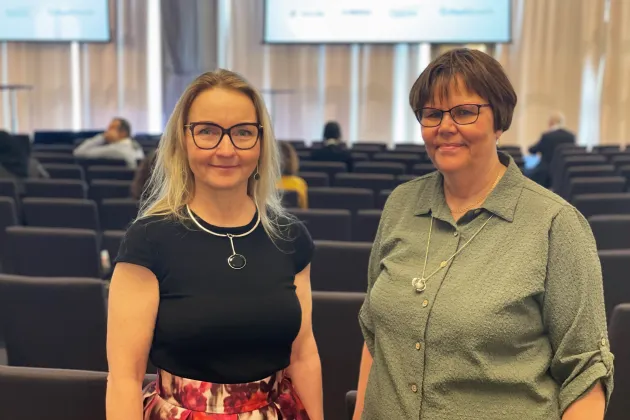Lund University Diabetes Centre (LUDC) and the strategic research are EXODIAB (Excellence of Diabetes Research in Sweden) hosted the European Islet Study Group conference, which was arranged at Scandic Triangeln in Malmö on June 11-13.
At LUDC, there are many research groups that study so called islets of Langerhans, cell clusters in the pancreas which contains cells important for the regulation of blood glucose, such as insulin-secreting beta cells, and alpha cells, which secrete glucagon. Studies of islets of Langerhans provide new knowledge about disease mechanisms in diabetes.
Over 250 researchers
The more than 250 researchers in islet cell research who gathered in Malmö for the international conference EISG share an interest for so called islet cell research.
“It is great to see that so many excellent researchers have gathered in Malmö for this conference. These meetings present an excellent opportunity for the research community to stay up to date with the latest research findings,” says Charlotte Ling, professor of epigenetics and diabetes at Lund University Diabetes Centre and member of the steering committee for this year's conference.
World-leading scientists gave lectures about, for example, the role of islets of Langerhans in disease development and treatment options for both type 1 diabetes and type 2 diabetes.
“There are many differences between the two forms of diabetes, but a common characteristic is that the insulin-producing cells are affected. A lot of research is therefore focused on developing treatments that can improve insulin production," says Charlotte Ling.
Collaboration opportunities
Lena Eliasson, vice coordinator of LUDC and the strategic research area EXODIAB, has been joining these meetings for many years. She has been part of the local organising committee for EISG in Malmö this year.
“I have been involved in arranging previous EISG meetings and it feels great to arrange the meeting in Malmö. We have a lot of islet cell research at LUDC, and this conference gives us a great opportunity to show our research,” says Lena Eliasson, vice coordinator of LUDC and EXODIAB.
Researchers at LUDC are active in the strategic research area EXODIAB, which is a research collaboration between Lund University and Uppsala University. Several colleagues from Uppsala University attended the conference. Diabetes researchers Sebastian Barg and Olov Andersson who lead activities within the research area at Uppsala University, were two of the participants.
“A large part of the research collaboration within our strategic research collaboration is focused on islets of Langerhans, as this helps us understand disease mechanisms in both type 1 diabetes and type 2 diabetes. It is of great importance that our strategic research area arranges conferences like this, as such activities can contribute to forming new research collaborations," says Sebastian Barg, professor and coordinator of EXODIAB at Uppsala University.

